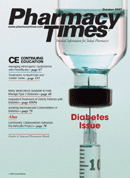Media Hype Leaves Doctors Confused, Patients Frightened over Avandia
Dr. Garnier is the chief executive officer of GlaxoSmithKline.
Medicines that improve patient health are falling victim to "media science," which turns complex medical data into sensational headlines. The resulting fear and confusion can pose a real risk to patient health, greater in some cases than the unsubstantiated analyses that are the focus of media hype.
Take Avandia (rosiglitazone maleate), for example. No other medicine for type 2 diabetes has compiled more clinical data on safety and effectiveness than Avandia. Research shows that Avandia controls blood sugar for up to 5 years- longer than the most widely prescribed diabetes medicines (metformin and sulfonylurea). That finding is important, because uncontrolled diabetes substantially increases patients' risk of blindness, kidney problems, amputation, heart attack, and sudden death.
Avandia also is safe when used appropriately. Analyses of gold-standard clinical trials-as well as databases with information from real-world use by more than 1.3 million diabetic patients-have shown that oral diabetes medicines have similar cardiovascular risk, apart from the higher risk of heart failure already described in the prescribing information for the thiazolidinedione class.
Publicity over 1 analysis of pooled Avandia clinical trials, however, raised questions about the cardiovascular safety of Avandia. Ignoring the vast amount of data already available that contradicts those results, headlines announced that patients were at a dramatically increased risk of heart attack, as if it were a proven fact rather than a hypothesis. News stories failed to note that the analysis in question detected a difference of 14 events between Avandia and comparator medicines among more than 25,900 patients-and no cause is actually proven for this small number.
Mathematical risk ratios make good headlines, but the media hype has left some doctors confused and many patients frightened. Eighty-two percent of 175 doctors recently surveyed have reported that fear generated by those headlines caused nearly a quarter of their patients with diabetes to stop taking Avandia without talking to the doctor. Already at risk of heart problems and other problems caused by their disease, 40% of the patients who stopped Avandia now have uncontrolled blood sugar, putting them at a greater risk of diabetes complications. Importantly, many patients have reported stopping Avandia and not starting any alternative treatment, taking their health status backward to having untreated, progressive type 2 diabetes.
An FDA expert committee recently reviewed all the scientific data available on the question and recommended overwhelmingly that Avandia remain available as an important treatment option for appropriate patients. The FDA is considering its final advice to physicians, but media hype has already taken its toll among patients.
As our safety surveillance systems become ever more efficient, we are able to collect and analyze larger sets of data in greater detail than ever before. As a result, we will certainly uncover possible signals of increasingly rare side effects, or those that affect very small groups of patients. The question is, what do very small numerical or statistical differences that signal a possible side effect actually mean for improved patient treatment? Certainly, if a drug is causing a problem, patients must be protected. Yet, we must recognize that diseases, genetics, and environmental factors may confound potential signals of a problem. Statistical analyses also sometimes identify a signal that is not confirmed in further work.
We cannot allow the benefit of medicines to be lost in the fear of an unsubstantiated hypothesis promoted in the media. Instead, we should allow rational expert review of the totality of the science to better identify and quantify real risk versus the possible safety risk of medicines. We must then balance that information with the known risks--particularly, of untreated, progressive disease--and the demonstrated benefits of treatment to improve patient health.

